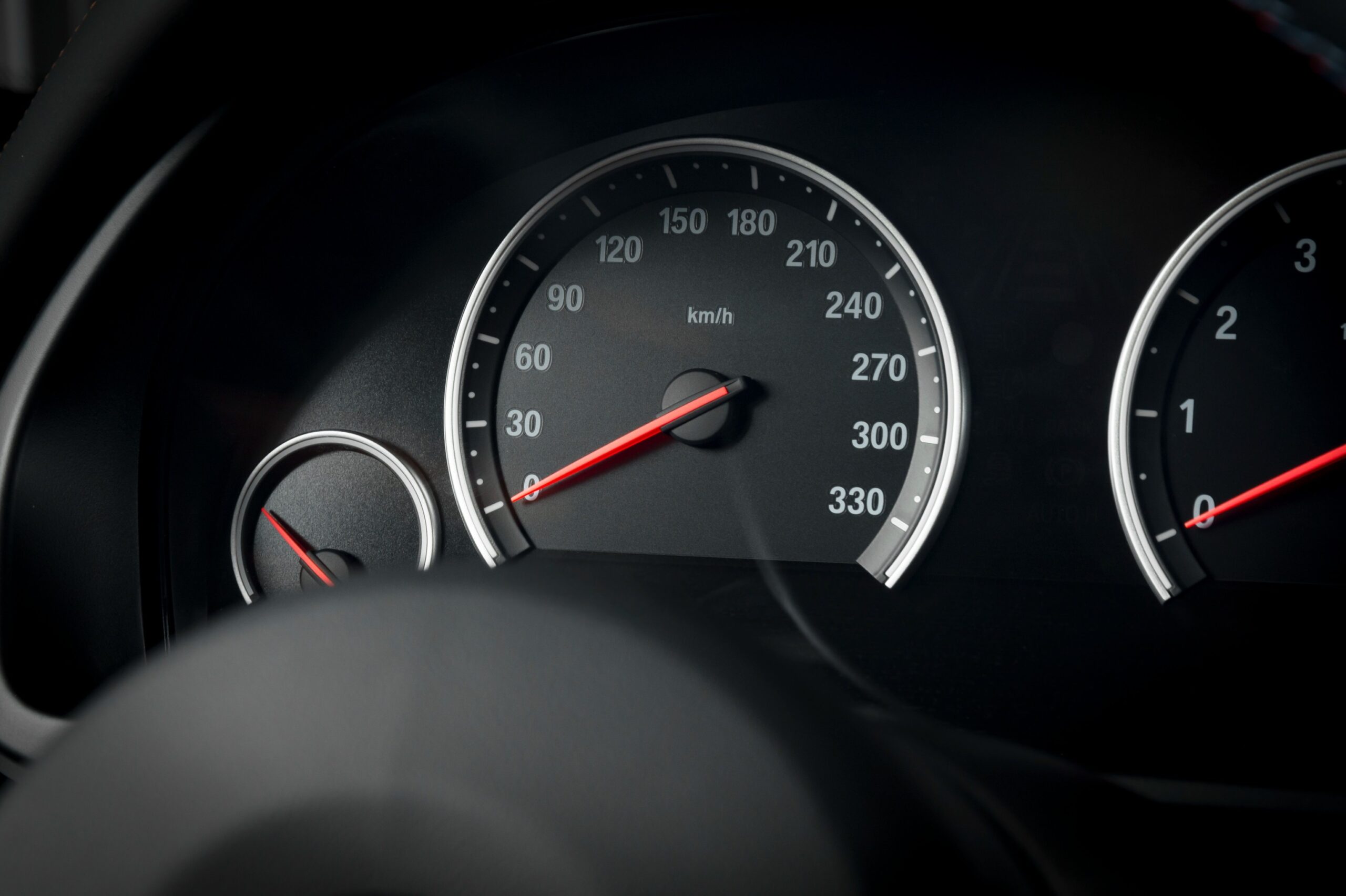How Kansas City Officers Use Time-Distance to Measure Vehicle Speed

Police officers in Kansas City use several methods to catch speeders. One of the oldest and most trusted is the time-distance method. This technique doesn’t rely on radar or laser tools. Instead, it uses basic math, sharp observation, and training.
At Speeding Ticket KC, we help drivers understand how time-distance measurements work — and how errors in this process can affect speeding tickets in court.
Understanding Time-Distance Speed Measurement
The time-distance method works on a simple rule:
Speed = Distance ÷ Time.
Kansas City officers use this formula to measure how fast a car travels between two fixed points. The points could be painted marks on a road, poles, or bridges.
Officers use a stopwatch or electronic timer to record how long a car takes to pass between those two points. Once the time and distance are known, they calculate the average speed.
For example, if a driver travels 200 feet in two seconds, the officer can calculate the vehicle’s speed in miles per hour.
Why Kansas City Officers Still Use This Method
Radar and laser guns are common today, but Kansas City police still use time-distance methods in some areas. There are several reasons for this:
- Works in all conditions. Radar can fail in bad weather or around reflective surfaces. Time-distance works in any light or weather.
- No electronic devices needed. Officers can use it without radar guns or complex setups.
- Easy to verify visually. The officer directly watches the vehicle’s movement.
It’s often used on stretches of road where radar signals can bounce or when equipment is unavailable.
How Officers Perform Time-Distance Speed Checks
Kansas City officers use either aerial timing or ground-based timing methods.
- Aerial Time-Distance Measurement:
In aerial checks, officers in airplanes or helicopters mark distances on highways using paint or landmarks. When a car crosses the first mark, the officer starts a timer. When the car crosses the second mark, the officer stops it. The average speed is then calculated. Ground officers are alerted by radio to stop the speeding driver. - Ground-Based Time-Distance Measurement:
Officers in patrol cars can also measure speed visually using set distances. They may use timing devices built into their vehicles or simple stopwatches.
Both methods require precise training and careful observation. Even a small timing mistake can change the result by several miles per hour.
Accuracy and Common Errors in Time-Distance Checks
While this method seems simple, it’s not flawless. Accuracy depends on human timing and correct distance measurement.
Here are some common problems that can affect the results:
- The officer starts or stops timing late.
- The reference points are measured incorrectly.
- The stopwatch or timer has a delay.
- The driver was changing lanes or braking.
- Visibility was poor due to the lighting or the weather.
These small errors can add up. Even a half-second delay can change the outcome by several miles per hour.
At Speeding Ticket KC, we often find mistakes in timing records, officer observation notes, or measured distances. These errors can make radar-free tickets unreliable in court.
The Role of Officer Training in Time-Distance Enforcement
Not every officer can perform time-distance checks. Kansas City requires officers to complete specific training before they can issue speeding tickets using this method.
They must learn how to:
- Select and measure distance markers.
- Use timing devices correctly.
- Account for reaction time.
- Keep visual focus on one vehicle.
- Record the data accurately.
In court, officers must explain these steps clearly. If they can’t show proper training or follow procedure, the ticket can be challenged.
Speeding Ticket KC often reviews officer certifications and training logs to verify whether proper methods were followed.
Time-Distance Evidence in Kansas City Courts
Kansas City courts accept time-distance readings as valid evidence when proper procedures are followed. The officer must testify about how the measurement was made and how accurate the setup was.
Prosecutors must show that:
- The distance was correctly measured.
- The officer used a reliable timer.
- The officer was trained and certified.
If any of these points fail, the evidence may be thrown out. Judges are strict about ensuring accuracy because the method relies heavily on human observation.
That’s why Speeding Ticket KC carefully examines every time-distance case. We look for missing proof, training errors, or gaps in documentation.
How Speeding Ticket KC Challenges Time-Distance Tickets
Our team at Speeding Ticket KC focuses on defending drivers facing time-distance speeding charges. We use several strategies to test the state’s case:
- Reviewing how the distance was measured.
- Checking calibration or testing of timing devices.
- Comparing the officer’s visual records with traffic camera data.
- Asking for proof of officer training and certification.
- Examining whether road conditions affected visibility.
If any detail is off, we use that to question the reliability of the evidence.
Sometimes, officers fail to measure exact distances, rely on poor timing, or misidentify vehicles. These factors can make a ticket invalid.
Technology and Time-Distance Measurement
Even though the concept is simple, some Kansas City police units now use video-assisted timing systems. These devices record vehicles crossing set points while automatically timing their travel.
Still, human supervision remains a major part of the process. The officer must set up the points correctly and confirm that the right car is being tracked.
Technology reduces mistakes but doesn’t remove them completely. That’s why Speeding Ticket KC reviews all video and timing data when defending clients.
When Time-Distance Evidence Fails in Court
Time-distance speeding tickets can fail for many reasons, such as:
- Poorly marked timing points.
- The officer lost visual contact with the vehicle.
- Timing recorded from the wrong start or end point.
- Missing written notes or inconsistent testimony.
If the officer can’t clearly explain each step, judges in Kansas City may dismiss the ticket.
Speeding Ticket KC often succeeds in getting such tickets dropped or reduced by pointing out inconsistencies or missing proof.
How Drivers Can Protect Their Rights
If you received a time-distance speeding ticket in Kansas City, don’t rush to pay it. You have the right to question the evidence.
Before you appear in court or admit guilt, contact Speeding Ticket KC. We’ll review your case and identify whether the officer followed proper steps.
Many drivers are surprised to learn that human error, poor visibility, or bad measurement can all affect the outcome.
Why Choose Speeding Ticket KC
At Speeding Ticket KC, we focus on defending traffic violations — especially speeding tickets. Our experience with Kansas City’s legal process helps us identify errors in time-distance enforcement.
When you hire us, we:
- Request all timing and measurement records.
- Review the officer’s report and training proof.
- Analyze the conditions and environment where the reading was made.
- Build a defense based on solid facts.
Our goal is to protect your license and your driving record.
Frequently Asked Questions (FAQs)
1. What is the time-distance method used by Kansas City police?
It’s a manual way to measure speed using distance and time between two fixed points.
2. Are time-distance readings as accurate as radar?
Not always. They depend on the officer’s timing and the accuracy of the distance measured.
3. Can I fight a time-distance speeding ticket in court?
Yes. Speeding Ticket KC can challenge timing errors, training gaps, or measurement mistakes.
4. Do Kansas City officers need certification to use this method?
Yes. They must complete training and follow approved procedures before issuing tickets this way.
5. What happens if the officer makes a timing mistake?
A timing mistake can make the evidence unreliable. Speeding Ticket KC can use that to get the ticket reduced or dismissed.
Final Word
The time-distance method may sound simple, but it’s not foolproof. It relies on human observation, exact timing, and perfect setup.
At Speeding Ticket KC, we make sure every step of that process is reviewed. Whether your ticket came from radar, laser, or time-distance measurement, we’ll fight for your rights and protect your driving record.
If you received a speeding ticket based on this method, contact Speeding Ticket KC today for a free consultation.

